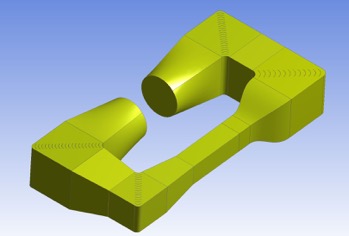1 Apr 2018
11 Dec 2017
Isaac Prada presents the application of the MOST-HDS algorithm, combined with CFD, to the design of objects and devices, in a webinar organized by ANSYS USA and by GOMPUTE
KeelWit applies its proprietary Multi-Objective Structured Hybrid Direct Search (MOST-HDS) methodology, which introduces optimization algorithms in the exploration of the most suitable combinations of the values of the different variables of highly complex functions, to reach the optimal value of the target function in CFD projects. By applying this methodology, KeelWit has obtained important improvements in the selected target function within the design of wind tunnels, water slides, injectors, exhaust gas ducts, etc. In the webinar Isaac explained how the use of this methodology can be considered a quantum leap when designing components, as it allows to apply ongoing phases of optimization over hundreds of possible combinations of the values of the variables, when compared to the usual methodology of selection and testing of 3 or 4 different configurations, almost exclusively based in the know-how obtained from previous designs. The joint use of GOMPUTE’s cloud High Performance Computing and ANSYS simulation software has allowed KeelWit to introduce improvements % in the target function that have ranged from 18% to 77% in device design for different...30 Nov 2017
KeelWit attends the “Innovation Day” organized by ANSYS Spain
Three of KeelWit Technology’s engineers attended the different presentations made throughout the day, being able to see and debate the new features of the numerical simulation tools of ANSYS, as well as the “best practices” of other Spanish companies in areas as different as space rockets, mobile phones or microalgae...10 Nov 2017
Commissioning a wind tunnel for aerodynamic testing
In order to equip itself with the most modern technology and to become a reference center among educational institutions in the area of racing cars’ engineering, a new center that will open its doors in 2018 has hired KeelWit to design and manufacture its wind tunnel for aerodynamic testing. Once the specifications list of the device has been agreed, KeelWit is applying its MOST-HDS algorithm to optimize its design while respecting the available footprint in the room where it will be installed, as well as the speed indexes that are required for accurate...17 Oct 2017








